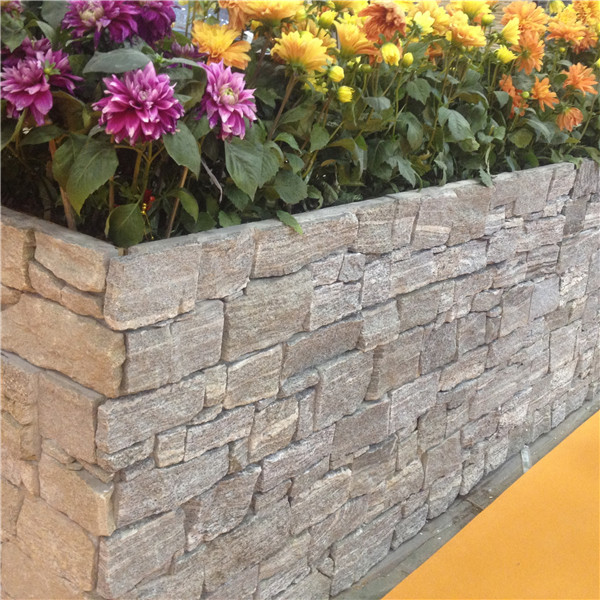Introduction
Fireplaces have long been a focal point in homes, providing warmth and ambiance to any room. One way to enhance the look and feel of your fireplace is by using cultured stone. Cultured stone, also known as manufactured stone or faux stone, offers the beauty and durability of natural stone at a more affordable price point. In this comprehensive guide, we will explore the benefits of using cultured stone for your fireplace, the various styles and options available, as well as the installation process and maintenance tips.

Benefits of Cultured Stone for Fireplaces
1. Aesthetics: Cultured stone mimics the natural look and texture of real stone, adding a touch of elegance and sophistication to your fireplace. With a wide range of colors and styles available, you can choose a cultured stone that complements the existing décor of your home.
2. Affordability: Cultured stone is often more cost-effective than natural stone, making it a budget-friendly option for homeowners looking to upgrade their fireplace without breaking the bank. Despite its lower price point, cultured stone is still durable and long-lasting.
3. Lightweight: Cultured stone is lighter in weight compared to natural stone, making it easier to install and reducing the need for additional structural support. This can also lead to savings on installation costs.
4. Versatility: Cultured stone can be used in various applications, not just for fireplaces. It can also be used for accent walls, exterior facades, and other architectural elements, allowing for a cohesive design throughout your home.
5. Eco-friendly: Cultured stone is often made from recycled materials, making it a sustainable choice for environmentally-conscious homeowners. Additionally, the manufacturing process for cultured stone produces less waste compared to quarrying natural stone.
Styles and Options
When it comes to choosing cultured stone for your fireplace, there are a plethora of styles and options to consider. Some popular styles include:
1. Stacked Stone: Stacked stone features a rugged, natural look with stones placed in a stacked pattern. This style adds texture and depth to your fireplace, creating a visually striking focal point.
2. Ledge Stone: Ledge stone is characterized by its irregular shapes and varying thickness, giving it a rustic and organic appearance. This style works well in both traditional and contemporary settings.
3. River Rock: River rock cultured stone mimics the smooth, rounded look of stones found in riverbeds. This style adds a touch of natural beauty and charm to your fireplace.
4. Brick: Brick cultured stone replicates the classic look of traditional brick, offering a timeless and versatile option for your fireplace. Brick cultured stone is available in various colors and finishes to suit your design preferences.
Installation Process
Installing cultured stone for your fireplace is a relatively straightforward process, but it is recommended to hire a professional for best results. Here is an overview of the installation process:
1. Preparation: Before installing cultured stone, the existing surface of your fireplace must be cleaned and prepared. Any loose debris or dirt should be removed, and the surface should be primed to ensure proper adhesion of the cultured stone.
2. Layout: Determine the layout and design of the cultured stone on your fireplace. This includes selecting the pattern, orientation, and placement of the stones. Dry-fitting the stones beforehand can help ensure a cohesive and visually appealing result.
3. Application: Apply a layer of mortar or adhesive to the back of each cultured stone piece and press it firmly onto the fireplace surface. Use spacers to maintain consistent spacing between the stones. Cut the stones as needed to fit around corners or edges.
4. Grouting: Once the cultured stone is in place, fill the gaps between the stones with grout to create a seamless appearance. Wipe away any excess grout with a damp sponge to achieve a clean finish.
5. Sealing: To protect the cultured stone and enhance its longevity, consider applying a sealant after the installation is complete. The sealant can help prevent staining and water damage, ensuring that your fireplace looks beautiful for years to come.
Maintenance Tips
To keep your cultured stone fireplace looking its best, follow these maintenance tips:
1. Regular Cleaning: Dust and debris can accumulate on the surface of cultured stone , so it is important to clean your fireplace regularly with a soft brush or cloth. Avoid using harsh chemicals or abrasive materials that could damage the stone.
2. Sealing: Depending on the type of cultured stone used, it may be necessary to reapply a sealant every few years to maintain its appearance and protect it from wear and tear. Consult with the manufacturer or a professional for specific recommendations on sealing products.
3. Avoid Extreme Temperatures: Cultured stone is durable, but extreme temperatures can cause it to expand or contract, leading to potential cracking or damage. Avoid exposing your fireplace to direct heat sources or sudden temperature changes.
4. Repair Damage Promptly: If you notice any chips, cracks, or other damage to your cultured stone fireplace, address it promptly to prevent further deterioration. Consult with a professional for repair options and guidance on maintaining the integrity of the stone.
Conclusion
Cultured stone offers a versatile and cost-effective solution for enhancing the beauty and functionality of your fireplace. With a wide range of styles and options available, you can customize your fireplace to suit your design preferences and create a stunning focal point in your home. By following proper installation and maintenance practices, you can enjoy the timeless elegance of cultured stone for years to come.
